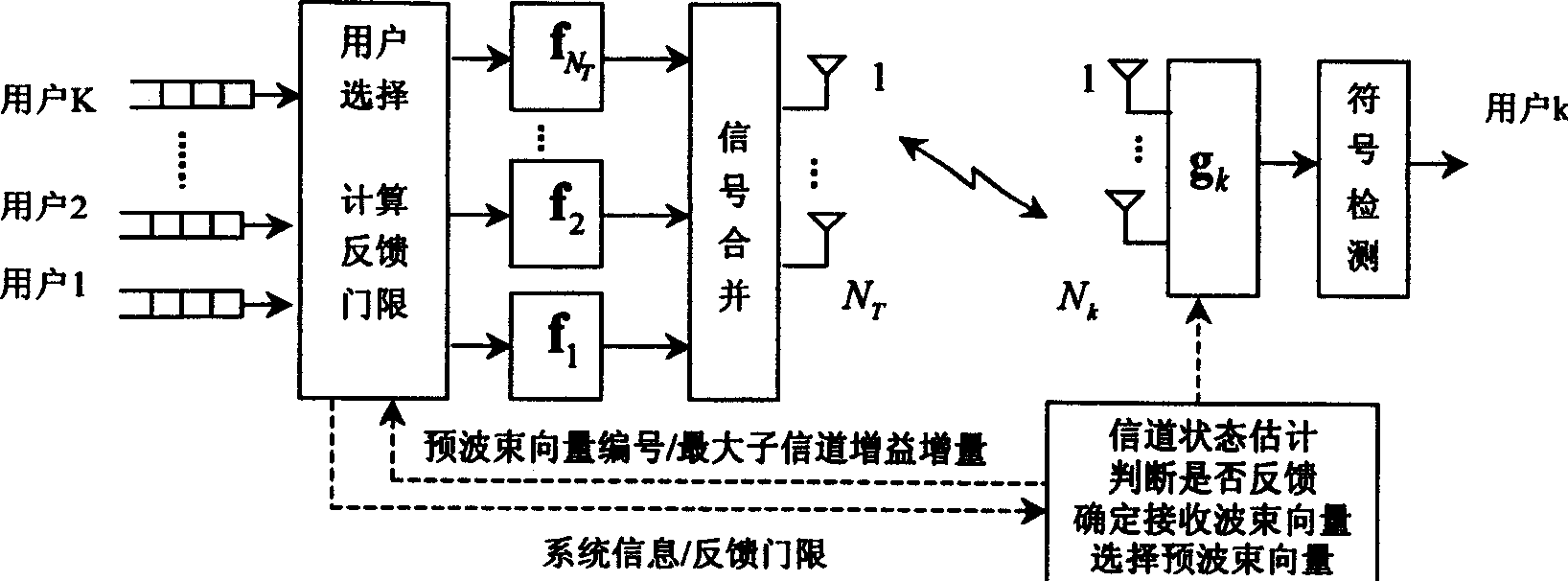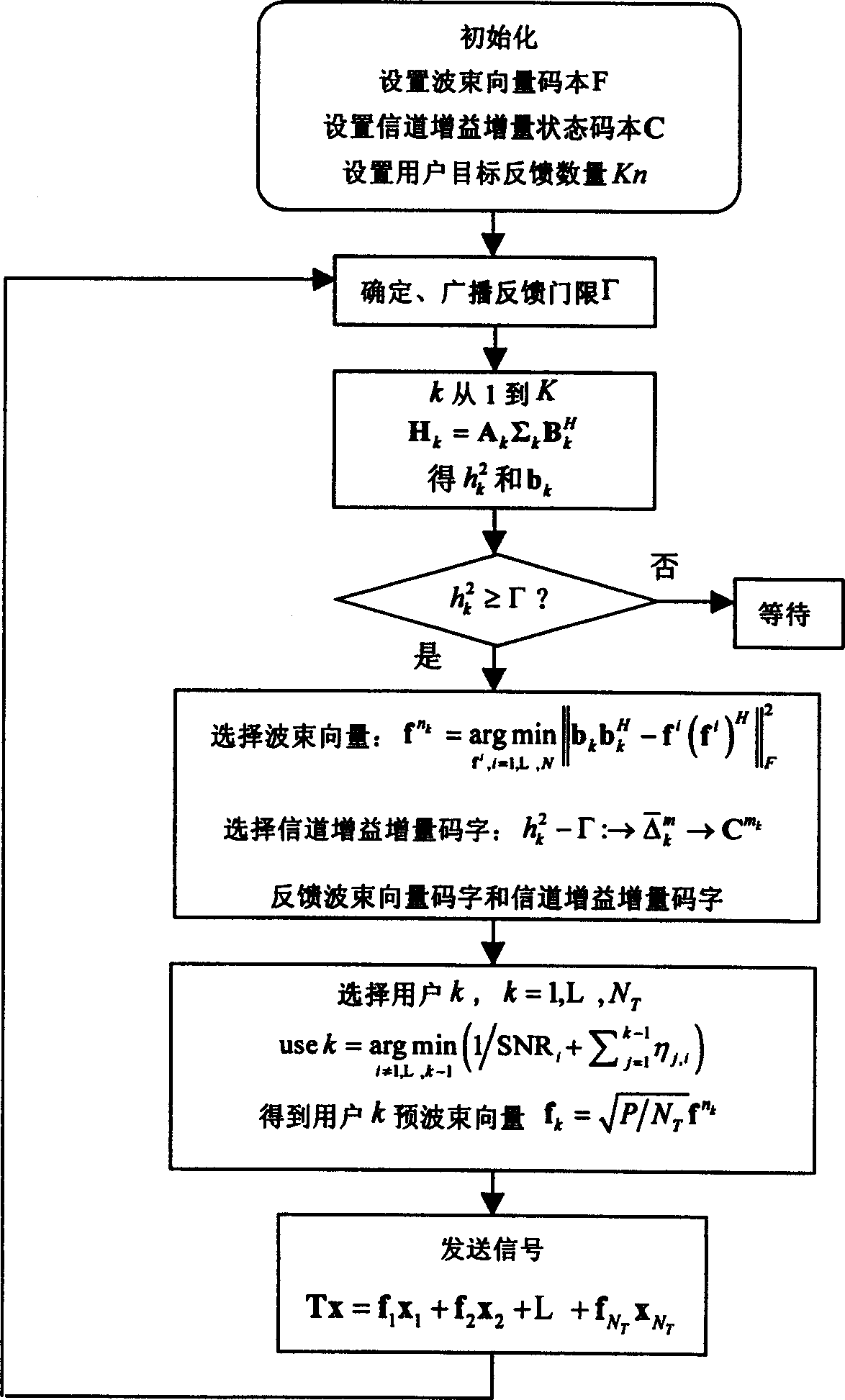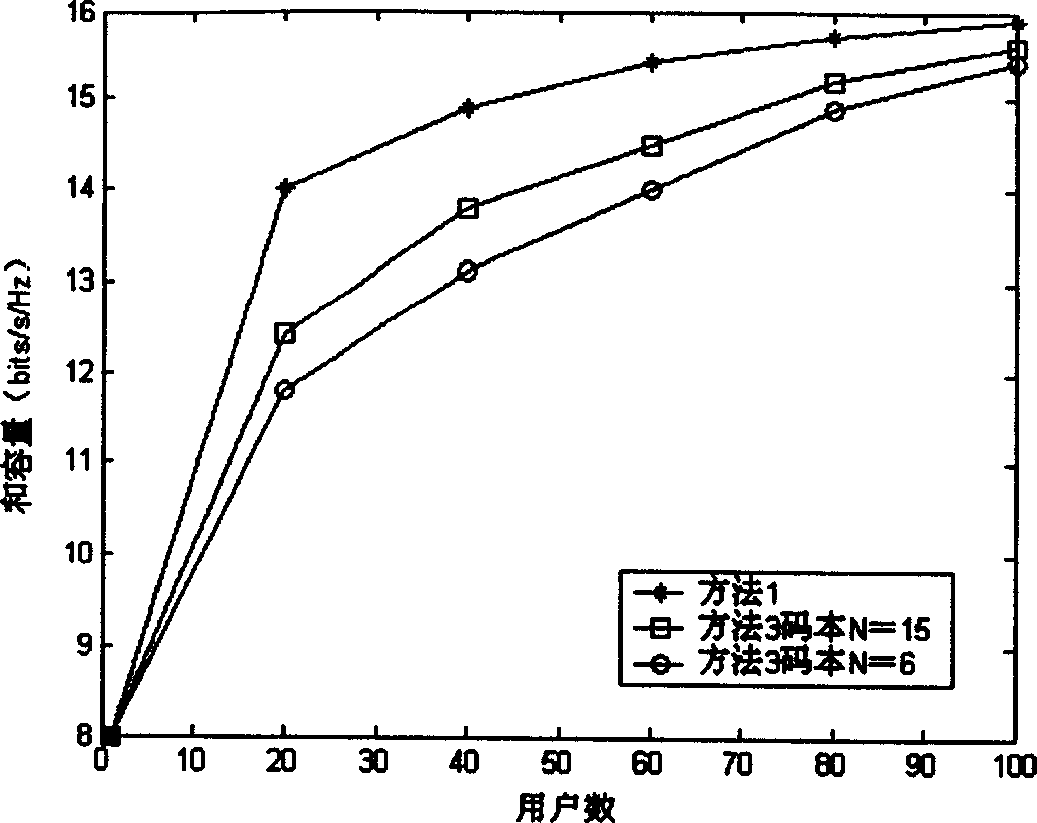Transmission method of orthogonal beam shaping in advance based on sending assistant selection of user's feedbacks
A transmission method and beamforming technology, which is applied in the field of orthogonal pre-beamforming transmission based on transmission-assisted selection of user feedback, can solve the problems of heavy, surge of channel state information, etc.
- Summary
- Abstract
- Description
- Claims
- Application Information
AI Technical Summary
Problems solved by technology
Method used
Image
Examples
Embodiment 1
[0081] Step 1: Use the following steps to initialize the system:
[0082] a. Determine system user channel correlation matrix R according to channel physical parameters and system parameters, and further determine user channel state matrix H distribution function and H maximum characteristic sub-channel gain distribution function and statistical mean value E[h 2 ],
[0083] b. Calculate the total number of users K in the cell, and calculate the normalized number of users kl=K / N T , N T is the number of transmit antennas,
[0084] c. Set the system user target feedback quantity Kn, which is taken as the transmitting antenna N T 6 to 10 times that of
[0085] d. Given the initial feedback threshold Γ required for the system to start working, let the feedback threshold be E[h 2 ],
[0086] e. Set the pre-beam vector codebook required for constructing the transmitted signal. The method of setting the pre-beam vector codebook is as follows:
[0087] a) The target value of th...
Embodiment 2
[0131] On the basis of multi-user diversity and pre-beamforming, the present invention proposes a simplified user selection method, which avoids joint user signal processing, and at the same time selects user feedback by sending auxiliary strategies, effectively reducing the amount of system feedback information. The present invention The beam vector design and quantization strategy of the multi-user system are given, and the effective transmission of the signal at the sending end is supported by limited feedback.
[0132] The present invention is aimed at following multi-input multi-out system broadcast channel model: the base station has N T transmit antennas, there are K independently distributed users in the system, and each user has N k receiving antennas, the system signal model is:
[0133] y = y 1 M ...
Embodiment 3
[0227] The structural block diagram of the multi-user MIMO system transmission method proposed by the present invention is as follows figure 1 shown. First, the system determines the feedback threshold of the system according to the user feedback information and the number of user target feedbacks, and uses the system broadcast channel to broadcast to all users; Compare the results to decide whether to feed back information; the selected user then selects the optimal pre-beam vector from the vector codebook, together with the maximum sub-channel gain incremental quantization value, and feeds it back to the sending end through a dedicated feedback channel; then, the sending end is in all According to the quasi-orthogonal design method among the users performing feedback, user selection is performed; finally, the transmitting end synthesizes the finally selected user signals and sends them to each user through multiple antennas.
[0228] Consider a typical suburban cellular pro...
PUM
 Login to View More
Login to View More Abstract
Description
Claims
Application Information
 Login to View More
Login to View More - R&D
- Intellectual Property
- Life Sciences
- Materials
- Tech Scout
- Unparalleled Data Quality
- Higher Quality Content
- 60% Fewer Hallucinations
Browse by: Latest US Patents, China's latest patents, Technical Efficacy Thesaurus, Application Domain, Technology Topic, Popular Technical Reports.
© 2025 PatSnap. All rights reserved.Legal|Privacy policy|Modern Slavery Act Transparency Statement|Sitemap|About US| Contact US: help@patsnap.com



